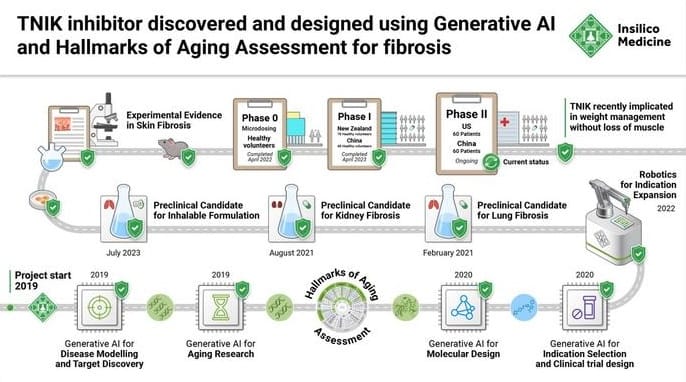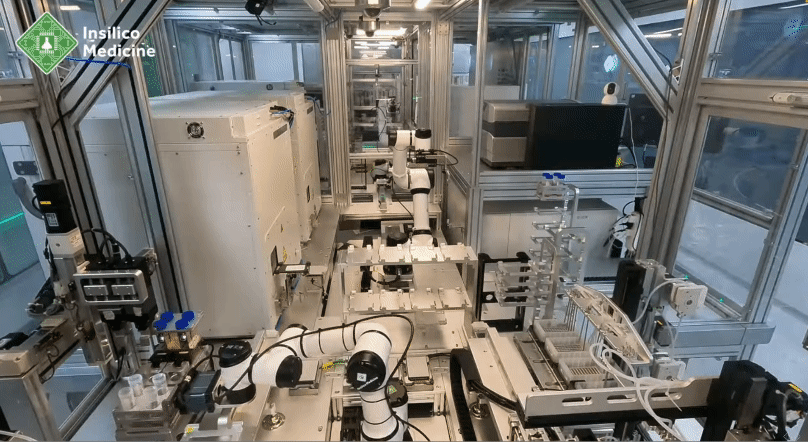
IPF is a horrible lung disease. There is no known cure.
The disease results in excessive scaring of the lungs, which typically leads to a rapid decline of the lungs’ ability to function properly. Ultimately, this results in respiratory failure.
While 20-25% of IPF patients live beyond 10 years after diagnosis, most succumb to the disease within 4-5 years.
While age and smoking are correlated to a higher likelihood of IPF, which stands for idiopathic pulmonary fibrosis, there is no known cause. Hence idiopathic — a medical term used to describe a disease or condition that pops up spontaneously… or from an unknown cause.
While rare, IPF still impacts about 5 million people worldwide. With very limited treatment options, most can only hope for the possibility to prolong, but not change, the ultimate outcome.
Complex and rare diseases like IPF are particularly frustrating to cure. And not knowing the cause makes them that much more difficult to develop a therapy for.
But there is hope.
A few days ago, a research paper — which could have been easily overlooked — was published in the scientific journal Nature.
It was titled, “A small-molecule TNIK inhibitor targets fibrosis in preclinical and clinical models."
It’s exciting, because it proposes a possible therapy to cure this terrible disease.
But that’s not what make the research so interesting.
What made the research so unique is that it demonstrated how a promising private biotech company — Insilico — was able to use generative artificial intelligence (AI) to develop the drug from the earliest research stage to preclinical trials.
This may come as a surprise, but artificial intelligence, specifically machine learning, is not new to drug development.
Many companies have employed the technology over the years… in an effort to optimize certain steps in the drug development process.
But the use of generative AI and deep neural networks for these processes are a rapidly evolving space — one that is now getting a lot of attention.
Insilico appears to be the biotech company that has most heavily utilized this technology throughout its development process.
And the results have been incredible so far.
Outer Limits readers might remember a similar story from December 2023, when Google’s DeepMind scientists used AI (and a massive amount of computing power) to discover 380,000 new inorganic, stable crystals that show promise for future technology applications. (Helpful background for the present issue: Outer Limits — DeepMind’s Latest AI Breakthrough)
At the time, DeepMind equated this novel discovery to 800 years’ worth of knowledge. And the company was able to use artificial intelligence to discover this knowledge in a matter of months.
This is the power of using AI and machine learning in scientific research and in the lab. Feats that would be otherwise impossible for human scientists… are not only possible for an AI, but capable of producing meaningful results in a matter of months.
In Insilico’s case, researchers were able to use generative AI to go from target discovery to pre-clinical candidate nomination in just 18 months at a cost of only $2.6 million. This is a process that normally takes about 5 years and tens of millions of dollars… with extremely high rates of failure.
While the process, shown below at a high level, is complex, it moved quickly… resulting in both a drug target and the generation of a molecular compound optimized for binding with that target.

TRAF2- and NCK-interacting kinase (TNIK) was identified as the anti-fibrotic target. And it was identified entirely using generative AI.
This was done by taking lung fibrosis data sets… combined with genomic data sets… and feeding that information into an AI for analysis.
Once trained on all relevant available data, the AI was given the task of searching for a disease target.
We can think of the target as a disease mechanism that — if controlled for by a drug/therapy — could result in a treatment or cure for the disease.
Insilico’s parameters for the AI were to find:
a) something that hadn’t been targeted before
b) a target that could be targeted with small molecules, and
c) protein + receptor kinases (kinases are enzymes that speed up the chemical process in our bodies).
After finalizing the disease target, Insilico used generative AI again to explore millions of possible compounds that could bind with the target. This part cannot go understated: This is obviously something that even a large team of scientists would not be able to do, on any timeline.
The AI produced hundreds of unique compounds, from which Insilico’s medical team selected 78 for further testing.
Insilico’s human scientists were again augmented, this time by robotics, to help accelerate the process of analyzing those potential compounds.

The results produced were clear.
One of the compounds, known as molecule 055, had “remarkable binding ability and inhibition of the target.”
The concept is simple, and remarkable.
Molecule 055 is now referred to as INS018_055.
It can bind with the target (TNIK), and inhibit the fibrosis related to idiopathic pulmonary fibrosis (IPF).
With INS018_055 in hand, here’s where the AI handed the science back over to the human scientists…
Insilico was then able to take the compound and conduct both in vitro and in vivo studies in mice on kidney cells and kidney fibrosis. Those tests demonstrated reduced fibrosis in the mice.
Next was the microdosing of healthy humans, in order to study the compounds pharmacokinetics — how the compound reacts with the human body. That study determined that INS018_055 was well tolerated.
Phase 1 involved a randomized, double-blind, placebo-controlled clinical trial in 78 healthy patients. Again, the results were good… leading to Phase 2a trials… which are currently underway in both the U.S. and China.
The most incredible part is that Insilico was able to move from the beginning of the drug development process of disease modeling and training of the AI… to Phase 2a trials in less than four years.
It’s important to say that no steps were skipped along the way. It was just made faster with the help of AI. And aside from the sheer speed and reduced costs is an arguably more important factor…
AI is able to produce disease targets and molecular compounds with better safety profiles, and far higher probabilities of success making it through clinical trials and regulatory approval.
With this single study, we can imagine the radical impact that artificial intelligence will have on the biotech industry.
It will bring safer, more effective drugs to market in less than half the time and at a fraction of the cost of traditional drug development.
That means that research and development funds will be spent more efficiently. And the likelihood of success will change the economics for early stage biotechnology investors.
More capital will be available to fund AI-empowered teams… because the likelihood of better outcomes in shorter periods of times will have improved so much.
Text, speech, video, or software code generation tends to get the most attention when talking about applications for generative AI. These applications are definitely easier to understand.
But the impact of AI on biotechnology and life sciences, while complex, will be profound.
This tech will enable therapies to be developed for diseases that have no cure…
And because AI so dramatically changes the economics of drug development, diseases that have historically been too small to justify spending more than $1 billion to find a cure and bring a drug to market… suddenly become realistic commercial targets for biotechnology companies.
This is not a “10 years away” story…
The economics of the biotech world are shifting radically as I write.
We’ve just entered the golden age of biotechnology. And its catalyst is AI.
If you have any questions, comments, or feedback, we always welcome them. We read every email and address the most common threads in the Friday AMA. Please write to us here.